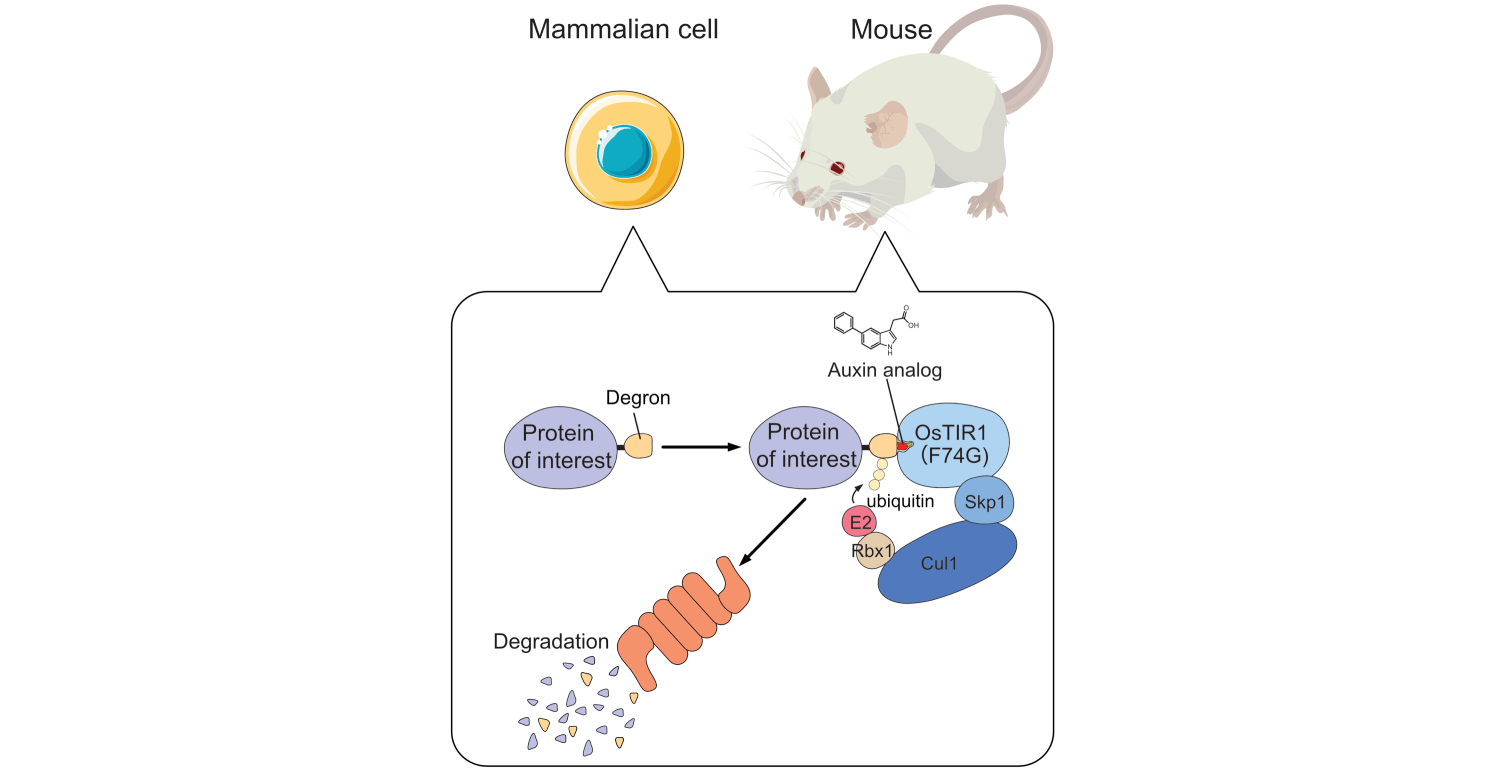Controlling protein lifespan with the auxin-inducible degron technology

In order to achieve the ultimate goal of “understanding the principles of protein lifespan”, methodologies to remove proteins involved in lifespan management are needed for examining their function. Furthermore, beyond the understanding of the principles, we aim for artificial manipulation of protein lifespan. The Auxin-Inducible Degron (AID) method, developed and improved by our group, is an ideal technology for the above purposes due to its rapid and reversible actions. However, even with the latest improved AID2, there are some issues: 1) a tiny amount of target protein remains at the time of degradation induction, which sometimes prevents phenotypic expression; 2) the addition of a degron tag requires a high level of genetic modification and is applicable to limited cell lines and species; 3) current inducible ligands are inefficient in inducing degradation in the brain. We will overcome these issues by improving AID2 technology and developing new inducing ligands, thereby expanding the versatility of AID2 and providing technical support to the research group.

- *Kanemaki MT. Ligand-induced degrons for studying nuclear functions. Curr Opin Cell Biol 74, 29-36 (2022)
- Negishi T, Kitagawa S, Horii N, Tanaka Y, Haruta N, Sugimoto A, Sawa H, Hayashi K, *Harata M, *Kanemaki MT. The auxin-inducible degron 2 (AID2) system enables controlled protein knockdown during embryogenesis and development in Caenorhabditis elegans. Genetics 220, iyab218 (2022)
- Saito Y, *Kanemaki MT. Targeted protein depletion using the auxin-inducible degron 2 (AID2) System. Curr Proto 1, e219 (2021)
- Yesbolatova A, Saito Y, Kitamoto N, Makino-Itou H, Ajima R, Nakano R, Nakaoka H, Fukui K, Gamo K, Tominari Y, Takeuchi H, Saga Y, Hayashi K, *Kanemaki MT. The auxin-inducible degron 2 technology provides sharp degradation control in yeast, mammalian cells, and mice. Nat Commun 11, 5701-5701 (2020)
- Yesbolatova A, Natsume T, Hayashi K, *Kanemaki MT. Generation of conditional auxin-inducible degron (AID) cells and tight control of degron-fused proteins using the degradation inhibitor auxinole. Methods 164-165, 73-80 (2019)
- Natsume T, *Kanemaki MT. "Conditional degrons for controlling protein expression at the protein level. Annu Rev Genet 51, 83-102 (2017)
- Natsume T, Nishimura K, Minocherhomji S, Bhowmick R, Hickson ID *Kanemaki MT. Acute inactivation of the replicative helicase in human cells triggers MCM8-9-dependent DNA synthesis. Gen & Dev 31, 816-829 (2017)
- Natsume T, Kiyomitsu T, Saga Y, *Kanemaki MT. Rapid protein depletion in human cells by auxin-inducible degron tagging with short homology donors. Cell Rep 15, 210-218 (2016)
- Nishimura K., Ishiai M., Horikawa K., Fukagawa T., Takata M., Takisawa H, *Kanemaki MT. Mcm8 and Mcm9 form a complex that functions in homologous recombination repair induced by DNA interstrand crosslinks. Mol Cell 47, 511-522 (2012)
- Nishimura K, Fukagawa T, Takisawa H, Kakimoto T, *Kanemaki M. An auxin-based degron system for the rapid depletion of proteins in nonplant cells. Nat Meth 6, 917-922 (2009)
